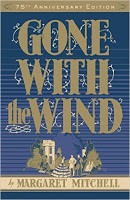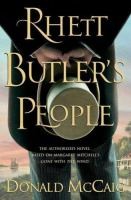 I’ve always enjoyed revisiting books that meant a lot to me at a particular time in my life – partly because it’s fun to re-immerse myself into a familiar narrative world, but also because it allows me to see how my own perspective toward life has changed throughout the years. In How to be a heroine ; or, what I’ve learned from reading too much, Samantha Ellis reflects upon the changes in her own life that has caused her to rethink some of her all-time favourite literary characters like Cathy Earnshaw from Wuthering Heights, Anne from Anne of Green Gables, and Elizabeth Bennett from Pride and Predjudice. The book is really more of a personal memoir than literary criticism, but it shows how deeply our love of certain characters can affect us throughout our lives.
I’ve always enjoyed revisiting books that meant a lot to me at a particular time in my life – partly because it’s fun to re-immerse myself into a familiar narrative world, but also because it allows me to see how my own perspective toward life has changed throughout the years. In How to be a heroine ; or, what I’ve learned from reading too much, Samantha Ellis reflects upon the changes in her own life that has caused her to rethink some of her all-time favourite literary characters like Cathy Earnshaw from Wuthering Heights, Anne from Anne of Green Gables, and Elizabeth Bennett from Pride and Predjudice. The book is really more of a personal memoir than literary criticism, but it shows how deeply our love of certain characters can affect us throughout our lives.
 In one of my favourite chapters, Ellis explores her feelings about Scarlett O’Hara, the wonderfully complicated heroine of Margaret Mitchell’s 1936 Pullitzer Prize winning epic, Gone With The Wind. Thoughout the chapter, Ellis reflects on her own development as a feminist and how strong characters like Scarlett initially helped her achieve a sense of independence from family pressures and expectations. Ellis recognizes that Scarlett’s pushy determination inspired her to move past her own Melanie-like teenaged bookish tendencies to take more risks and to focus on herself, but she eventually realizes that Melanie may have been the stronger character all along, and that Scarlett would have been a much happier person if she could have appreciated Melanie’s friendship throughout her life.
In one of my favourite chapters, Ellis explores her feelings about Scarlett O’Hara, the wonderfully complicated heroine of Margaret Mitchell’s 1936 Pullitzer Prize winning epic, Gone With The Wind. Thoughout the chapter, Ellis reflects on her own development as a feminist and how strong characters like Scarlett initially helped her achieve a sense of independence from family pressures and expectations. Ellis recognizes that Scarlett’s pushy determination inspired her to move past her own Melanie-like teenaged bookish tendencies to take more risks and to focus on herself, but she eventually realizes that Melanie may have been the stronger character all along, and that Scarlett would have been a much happier person if she could have appreciated Melanie’s friendship throughout her life.
It’s an interesting perspective, and one that I can identify feeling as a teenager. Gone with the Wind was my all-time favourite book during my middle school years. Like Ellis, I remember loving Scarlett’s lack of willingness to suffer fools gladly and her determination to survive despite all odds, but wished that she could have appreciated the people around her a little more. But my hero-worship of Scarlett is long gone: upon rereading the book several times since my teenage years I find the implicit racism of the book impossible to ignore. None of the many African-American characters are shown to have lives of their own, and even saintly characters like Melanie support the activities of the Ku Klux Klan.
 In recent years, several authors have attempted to create back stories for many of the secondary characters in Gone With The Wind. In 2014, Donald McCaig was commissioned by the Margaret Mitchell estate to write the back story for the Mammy character, which resulted in Ruth’s Journey. (McCaig was previously commissioned by the Gone with the Wind estate to write Rhett Butler’s People in 2007). Although this story finally offered Mammy the dignity of a name and an origin story, I was disappointed with Ruth’s Journey because it still focused more on the lives of Scarlett’s mother and grandmother rather than exploring Ruth’s thoughts, feelings and motivations. The Ruth character still only exists in relation to white slavemasters.
In recent years, several authors have attempted to create back stories for many of the secondary characters in Gone With The Wind. In 2014, Donald McCaig was commissioned by the Margaret Mitchell estate to write the back story for the Mammy character, which resulted in Ruth’s Journey. (McCaig was previously commissioned by the Gone with the Wind estate to write Rhett Butler’s People in 2007). Although this story finally offered Mammy the dignity of a name and an origin story, I was disappointed with Ruth’s Journey because it still focused more on the lives of Scarlett’s mother and grandmother rather than exploring Ruth’s thoughts, feelings and motivations. The Ruth character still only exists in relation to white slavemasters.
 I much preferred The Wind Done Gone by Alice Randall, which reveals the story of Cyanara, the secret daughter of Mammy and Gerald O’Hara (Scarlett’s half-sister), which continues the story after Gone With The Wind ends. This book is a really fun read: lots of secrets about the lead characters are revealed, and we learn that the African American characters were pulling the strings of their white owners all along. Nowadays, we’d likely call this fan fiction, but in 2001, the Margaret Mitchell estate was furious with the book and sued Randall’s publisher for alleged copyright infringement. Randall was forced to add a big disclaimer to the front cover of The Wind Done Gone to make it clear the book was an anauthorized parody.While it’s not attempting to be great literature, it does make an interesting companion piece to the original.
I much preferred The Wind Done Gone by Alice Randall, which reveals the story of Cyanara, the secret daughter of Mammy and Gerald O’Hara (Scarlett’s half-sister), which continues the story after Gone With The Wind ends. This book is a really fun read: lots of secrets about the lead characters are revealed, and we learn that the African American characters were pulling the strings of their white owners all along. Nowadays, we’d likely call this fan fiction, but in 2001, the Margaret Mitchell estate was furious with the book and sued Randall’s publisher for alleged copyright infringement. Randall was forced to add a big disclaimer to the front cover of The Wind Done Gone to make it clear the book was an anauthorized parody.While it’s not attempting to be great literature, it does make an interesting companion piece to the original.
There are plenty of other officially endorsed prequels and sequels, as well as non-fiction accounts of the Gone With the Wind phenomenon. If you are (or were) a big fan of Gone With The Wind, it’s worth it to revisit some of these titles.
 |
 |
 |
 |

